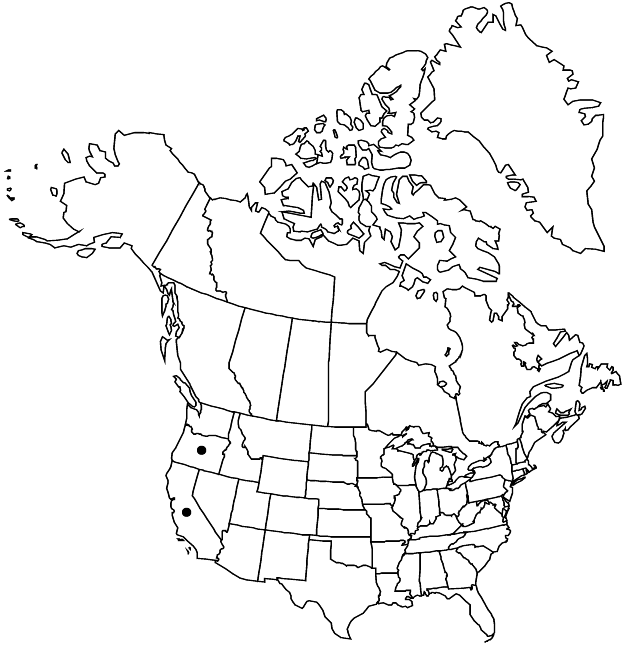Difference between revisions of "Eriogonum luteolum"
Pittonia 3: 200. 1897.
RevisionBot (talk | contribs) m (Bot: Adding category Revision Pending) |
imported>Volume Importer |
||
| Line 6: | Line 6: | ||
|place=3: 200. 1897 | |place=3: 200. 1897 | ||
|year=1897 | |year=1897 | ||
| + | }} | ||
| + | |special_status={{Treatment/ID/Special_status | ||
| + | |code=F | ||
| + | |label=Illustrated | ||
| + | }}{{Treatment/ID/Special_status | ||
| + | |code=E | ||
| + | |label=Endemic | ||
}} | }} | ||
|basionyms= | |basionyms= | ||
| Line 23: | Line 30: | ||
-->{{Treatment/Body | -->{{Treatment/Body | ||
| − | |distribution= | + | |distribution=Calif.;Oreg. |
|discussion=<p>Varieties 4 (4 in the flora).</p> | |discussion=<p>Varieties 4 (4 in the flora).</p> | ||
|tables= | |tables= | ||
| Line 69: | Line 76: | ||
|basionyms= | |basionyms= | ||
|family=Polygonaceae | |family=Polygonaceae | ||
| − | |distribution= | + | |distribution=Calif.;Oreg. |
|reference=None | |reference=None | ||
|publication title=Pittonia | |publication title=Pittonia | ||
|publication year=1897 | |publication year=1897 | ||
| − | |special status= | + | |special status=Illustrated;Endemic |
| − | |source xml=https:// | + | |source xml=https://bitbucket.org/aafc-mbb/fna-data-curation/src/2e0870ddd59836b60bcf96646a41e87ea5a5943a/coarse_grained_fna_xml/V5/V5_870.xml |
|subfamily=Polygonaceae subfam. Eriogonoideae | |subfamily=Polygonaceae subfam. Eriogonoideae | ||
|genus=Eriogonum | |genus=Eriogonum | ||
| Line 81: | Line 88: | ||
}}<!-- | }}<!-- | ||
| − | --> | + | -->[[Category:Treatment]][[Category:Eriogonum subg. Oregonium]] |
| − | |||
| − | [[Category:Treatment]] | ||
| − | [[Category:Eriogonum subg. Oregonium | ||
| − | |||
Revision as of 22:14, 5 November 2020
Herbs, erect or prostrate to spreading, 0.5–6 dm, glabrous or occasionally tomentose, greenish to reddish. Stems: aerial flowering stems prostrate to erect, 0.2–2 dm, glabrous or occasionally tomen-tose. Leaves basal or basal and cauline; basal: petiole 1–8 cm, floccose, blade oblong-ovate, reniform, or rounded to cordate, 0.5–5 × 0.5–3.5 cm, densely white-tomentose abaxially, floccose or glabrous and reddish or greenish adaxially; cauline: petiole 0.5–3 cm, floccose, blade cordate to reniform or orbiculate, 0.5–3 × 0.5–3 cm, similar to basal blade. Inflorescences cymose, occasionally distally uniparous due to suppression of secondary branches, open, 2–50 × 3–40 cm; branches glabrous or occasionally tomentose; bracts 1–3(–4) × 1–2 mm. Peduncles absent or erect, straight, slender, 0.1–0.5 cm, glabrous. Involucres terminal at tips of slender branchlets proximally or appressed to branches, cylindric or occasionally turbinate, 2–4 × 1.5–2.5 mm, glabrous or rarely floccose; teeth 5, erect, 0.3–0.5 mm. Flowers 1–2.5 mm; perianth white to rose or yellow, glabrous; tepals monomorphic, obovate; stamens included, 1–1.5 mm; filaments glabrous. Achenes light brown, 3-gonous, 1–2 mm.
Distribution

Calif., Oreg.
Discussion
Varieties 4 (4 in the flora).
Selected References
None.
Lower Taxa
Key
| 1 | Plants prostrate to spreading, 0.5-3 dm; involucres 3-4 mm, often terminal on elongated branchlets; leaves basal and cauline; serpentine soil; w Alameda and s Marin counties, California | Eriogonum luteolum var. caninum |
| 1 | Plants erect, 2-6 dm; involucres 2-3.5 mm, appressed to inflorescence branches; leaves basal, sometimes also cauline; serpentine or granitic soils; San Mateo, Santa Clara, and Mariposa counties, California, n to sw and sc Oregon | > 2 |
| 2 | Involucres 2-3 mm; flowers 2-2.5 mm; granitic soils; Sierra Nevada, Alpine and Tuolumne counties, California | Eriogonum luteolum var. saltuarium |
| 2 | Involucres 3-3.5 mm; flowers 1-2 mm; serpentine soils; Coast Ranges and lower foothills of Sierra Nevada, San Mateo, Santa Clara, and Mariposa counties, California, n to sw and sc Oregon | > 3 |
| 3 | Flowers 1.8-2 mm; Coast Ranges, w California from San Mateo and Santa Clara counties n to sw and sc Oregon | Eriogonum luteolum var. luteolum |
| 3 | Flowers 1-1.5(-1.8) mm; e California from Mariposa County to Plumas County | Eriogonum luteolum var. pedunculatum |